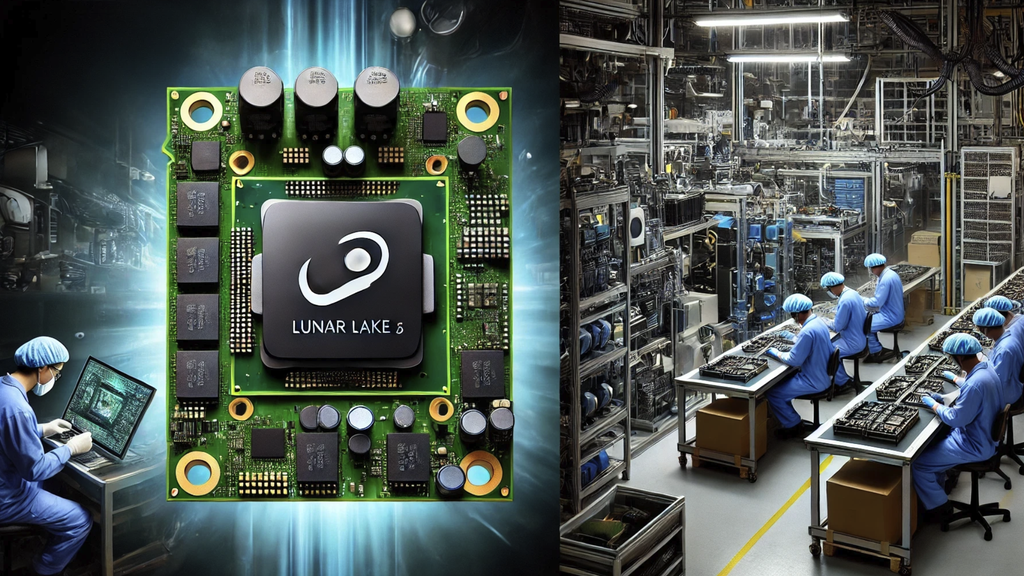Intel’s next-generation Lunar Lake processors are set to bring significant advancements in AI performance and power efficiency, according to recent leaks and announcements from the tech giant. These CPUs, expected to launch in the third quarter of 2024, will feature a combination of innovative architectures and integrated AI capabilities designed to enhance both performance and energy consumption for thin and light laptops.
Enhanced AI Performance
One of the standout features of the Lunar Lake CPUs is their substantial boost in AI capabilities. The processors will integrate a new Neural Processing Unit (NPU), rated to deliver up to 48 TOPS (Trillions of Operations Per Second) of INT8 performance. This is part of a broader AI push, with the integrated GPU based on the Xe2 architecture also contributing to AI tasks. Collectively, the Lunar Lake platform is expected to achieve over 100 TOPS of AI performance, marking a 3.15x improvement over Intel’s current-gen chips.
New CPU and GPU Architectures
The Lunar Lake CPUs will incorporate the latest Lion Cove P-core and Skymont E-core architectures. These cores are designed to handle a wide range of computing tasks efficiently. The CPUs will also feature Intel’s Xe2 integrated graphics, which are expected to deliver 1.5x the gaming performance of the previous Meteor Lake generation, though these figures are based on synthetic benchmarks and real-world performance may vary.
Power Efficiency Innovations
In addition to AI enhancements, Intel is focusing heavily on power efficiency. The Lunar Lake chips will leverage a radically new low-power architecture, promising up to 30% lower active power consumption compared to AMD’s Ryzen 7 7840U. This makes Lunar Lake particularly attractive for laptops and other mobile devices where battery life is a critical factor.
Intel’s Thread Director technology will play a crucial role in managing power efficiency. This technology dynamically assigns tasks to the most appropriate cores (P-cores or E-cores), optimizing performance while minimizing power usage. This approach, combined with the integration of on-package LPDDR5X memory, will help in reducing latency and improving overall energy efficiency.
Real-World Applications and Expectations
The first Lunar Lake-powered devices are expected to hit the market around the holiday season of 2024. These processors will be particularly suited for high-end notebooks and convertibles, offering always-on capabilities and enhanced AI-driven features such as Microsoft Copilot+ integration.
While Intel’s performance claims are promising, it’s important to consider that the benchmarks provided are based on controlled, vendor-specific tests. Real-world performance might differ once these chips are tested in consumer devices with typical power and thermal constraints.
Conclusion
Intel’s Lunar Lake CPUs are shaping up to be a significant step forward in both AI performance and power efficiency. By integrating advanced CPU and GPU architectures with powerful AI capabilities and innovative power management technologies, Intel aims to deliver a new level of performance for portable computing devices.



